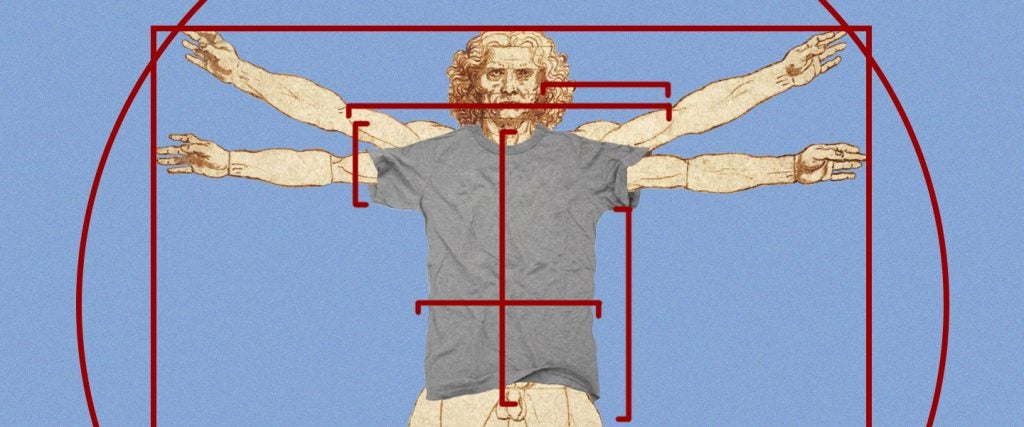Until the pandemic hit, 33-year-old James Daniels had spent the better part of a decade working in civil engineering and construction. But like many others, quarantine left him both down-on-his-luck professionally and mulling new opportunities. “I spent a lot of my day filling in forms and spreadsheets, and I decided it’d be more fun to be designing those things rather than filling them in,” he tells me. So, he set off for a coding boot camp.
All the while, he was a frequent contributor to the Male Fashion Advice subreddit (MFA), too. “I loved how helpful everyone was, and also found it incredibly useful for getting me through developing my wardrobe,” he says. “I generally find shopping for clothes quite anxiety-ridden and stressful, so it was a huge relief to get the help.” Given his engineering background, Daniels was especially drawn to posts that described systems for dressing yourself — like those around color coordination or what to wear on a first date.
As a way to both pay-it-forward and try out his new coding skills, Daniels decided to come up with his own “system” to circumvent what he refers to as “wasted shopping trips.” “I really don’t enjoy the experience of spending 20 minutes walking around a shop trying things on, only to find that nothing fits me at all,” he explains. His solution was to program a tool that could take a person’s measurements and cross-reference them with measurements from nearly every company that’s ever sold a T-shirt.
The premise of his “MFAHelper” is that everyone has a particular size of T-shirt that fits them, and once you know the measurements of that T-shirt (your ideal T-shirt measurements), the tool will automatically filter only those that fit you. “My initial idea was to allow users to record whatever T-shirt they owned that fit them best, and then filter T-shirts based on that,” he says. “But I also built in a simple calculator that estimates your ideal measurements based on a few questions about your height, build, weight, etc.”
To gather the necessary data, he spent a considerable amount of time going in and out of stores to measure whatever T-shirts they had in stock. (Overall, it took two years for Daniels to get MFAHelper to a place where he felt it was good enough to share with his fellow MFA members.) “Everyone’s been very relaxed about it, but I’m always a little nervous when I go to stores with my tape measure,” he says. “I imagine [the staff is] wondering why I’m taking quite so long in the changing rooms. Shout out to the kind shop assistant in Jack & Jones who offered to help bring T-shirts for me.”
On the MFAHelper results page, Daniels added “Fit” and “Reliability” scores. “The Fit score is basically an equation that compares the garment measurements to the user’s ideal measurements,” he explains. “A perfect score is 100, so if you had a garment that was exactly the same as your ideal measurements, it would get 100.” A good real-world example: If a garment’s chest measurement is 30 centimeters — Daniels is from Wales so the MFAHelper trades completely in metric numbers — and your ideal chest measurement is 31 centimeters, you might see your Fit score reduced to 99.
Meanwhile, Daniels says, “The Reliability score is based on how many measurements are available. So if you’ve only inputted half your measurements — e.g., your chest, waist, shirt-length and collar, but not the hem and sleeve length — you’ll see a reliability score of 50 percent.”
Daniels says the feedback he’s received from MFA subscribers has been mostly positive. But as with anything on the internet (and Reddit in particular), it’s not without its detractors. “When I post about MFAHelper, I’ll reliably have people who say that it’s a waste of time for reasons such as that fit is subjective, so there’s no point in trying to assume a certain size of shirt will work for people,” he tells me.
Others have responded by suggesting that while they believe his efforts are noble, they can’t help but think they’re in vain. “Most outlets have set sizes as you’ve mentioned previously, but the actual size of each item can vary massively,” one MFAer argued, citing the fact that because each brand uses multiple factories to manufacture their products, a single type of H&M shirt can have different pattern cuts, meaning that no two medium H&M shirts are necessarily alike.
Either way, Daniels considers his work done for now. While he has always aimed to expand to other garments like hoodies and jeans, he’s taking a break for the moment. After all, he doesn’t have much left to prove. “I’ve proven it can be made,” he concludes, “and I’ve proven that I can make it.”

